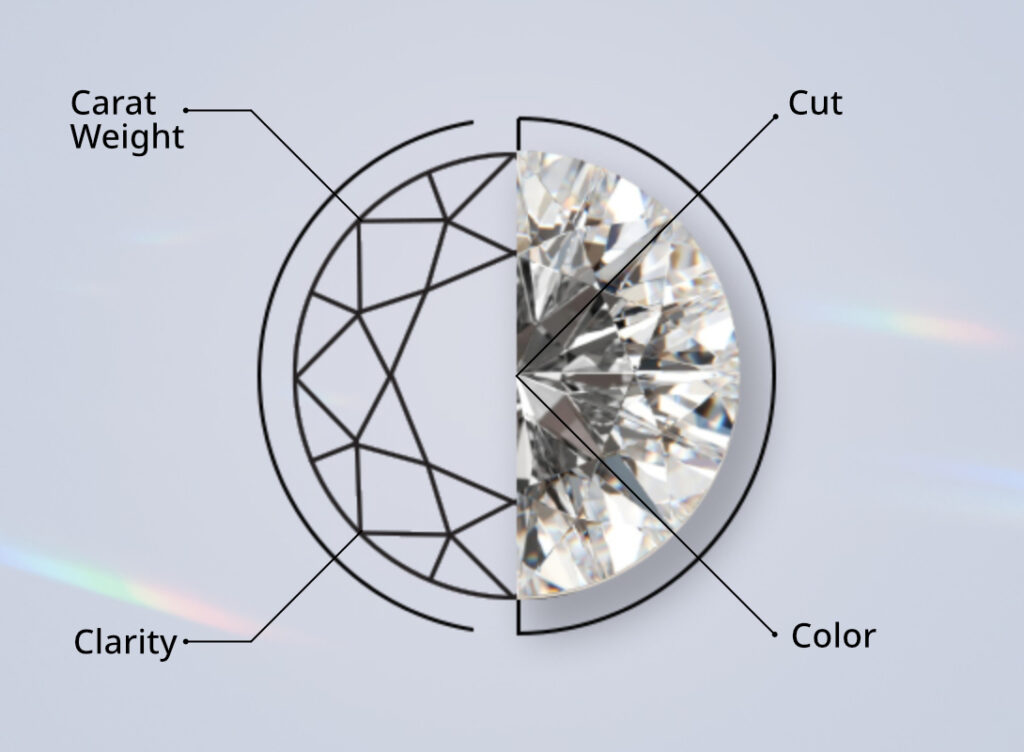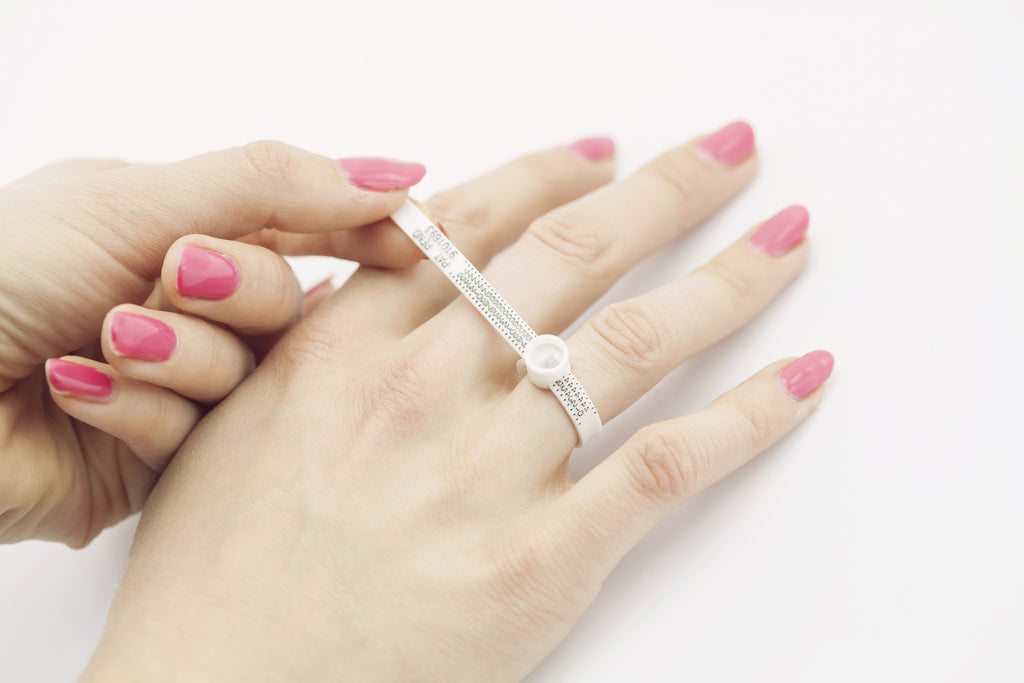Selecting a diamond can be a daunting task, especially with the vast array of options available in the market today. Whether you’re buying a diamond for an engagement ring or as an investment, understanding the key factors that influence a diamond’s quality is essential. This guide will walk you through the key considerations to help you Selccionar diamantes that fit your preferences and budget.
Table of Contents
ToggleUnderstanding the 4 Cs When You Select Diamonds
When you select diamonds, one of the first things you’ll encounter is the concept of the 4 Cs: Cut, Color, Clarity, and Carat weight. These factors are the primary criteria used to assess a diamond’s quality and value. Understanding each of these elements will help you make an informed decision when purchasing a diamond.
Cut refers to how well a diamond has been shaped and faceted. A well-cut diamond will sparkle brilliantly, while a poorly cut one may appear dull, regardless of its size or clarity. The quality of the cut is the most important factor to consider when you select diamonds because it influences how the diamond interacts with light.
Color describes the degree of whiteness in a diamond. Diamonds are graded on a scale from D (colorless) to Z (light yellow or brown). Colorless diamonds are the most valuable, but diamonds with a slight tint can still offer good value, depending on your preferences.
Clarity refers to the presence of internal or external flaws known as inclusions and blemishes. Most diamonds contain some imperfections, but they may not be visible to the naked eye. When you select diamonds, it’s essential to understand the clarity grade and how much it affects the diamond’s appearance.
Carat weight measures the size of the diamond. Larger diamonds are rarer and typically more expensive, but carat weight alone shouldn’t be the deciding factor when you select diamonds. A smaller diamond with a higher cut quality may offer better value than a larger, lower-quality diamond.
Consider Your Budget When You Select Diamonds
One of the most important factors to keep in mind when you select diamonds is your budget. Diamonds come in a wide range of prices, and understanding how much you’re willing to spend will guide your choices. The 4 Cs are interrelated, meaning that adjusting one factor can influence the others. For example, you may need to choose a slightly smaller carat weight or a diamond with a lower color grade to stay within your budget while still selecting a high-quality diamond.
It’s also helpful to be aware of the potential additional costs, such as the setting, insurance, and certification fees. Many people focus primarily on the cost of the diamond itself, but considering these extra expenses will give you a clearer picture of the overall cost when you select diamonds.
How to Choose the Right Shape When You Select Diamonds
The shape of a diamond is another important consideration when you select diamonds. While this doesn’t affect the quality, it significantly influences the diamond’s appearance and the overall aesthetic of the jewelry. The most popular diamond shapes are round, princess, cushion, oval, emerald, and marquise, each with its unique appeal.
Round diamonds are the most traditional and offer the most sparkle due to their symmetry, making them an excellent choice for engagement rings. However, other shapes like the princess or cushion can offer more modern or vintage looks. When you select diamonds, think about your personal style and what will complement the setting and design of your ring or piece of jewelry.
The Importance of Certification When You Select Diamonds
Another essential aspect of selecting diamonds is ensuring they are certified by a reputable grading institution. The most trusted certification organizations include the Gemological Institute of America (GIA) and the American Gem Society (AGS). Certification provides an unbiased, professional assessment of the diamond’s quality based on the 4 Cs and ensures that the diamond is authentic.
When you select diamonds, always ask for a certificate that verifies the quality of the stone. A certified diamond will give you peace of mind, knowing that the price you’re paying is in line with the diamond’s actual value. Additionally, reputable jewelers will offer guarantees or warranties for certified diamonds, adding an extra layer of protection for your investment.
Buying Loose Diamonds vs. Mounted Diamonds
When selecting lab created diamonds, you’ll face the choice between buying a loose diamond or a mounted one. Loose diamonds are sold individually, giving you the freedom to choose the diamond that best suits your preferences. You can then have the diamond set in the jewelry piece of your choice. Buying loose diamonds allows you to compare various options and handpick the stone with the best attributes based on your budget.
On the other hand, mounted diamonds come already set in a ring or piece of jewelry. While mounted diamonds are convenient and may save you time, they may not offer as much flexibility in terms of selecting the perfect stone. Additionally, the quality of the setting should be considered when you select diamonds, as it affects the overall appearance and security of the diamond in the piece.
Evaluating Diamond Cut Quality
The cut quality of a diamond is crucial when selecting a diamond, as it directly impacts the stone’s brilliance and overall beauty. A diamond with a well-executed cut will reflect light from every angle, creating a stunning visual effect. When you select diamonds, pay attention to the proportions and symmetry of the cut. A well-cut diamond will be more visually appealing, even if it has a lower carat weight or color grade.
It’s worth noting that diamond cuts are graded on a scale that ranges from Excellent to Poor. When you select diamonds, prioritize the highest cut grade you can afford within your budget. A higher cut grade often results in a more dazzling diamond, which can make a significant difference in the overall appeal of your jewelry.
Conclusion: The Final Steps to Select Diamonds
After considering the 4 Cs, budget, shape, certification, and other factors, you are now ready to make an informed decision about which diamond to select. Take your time to compare options, ask questions, and ensure that you are satisfied with the quality and price of the diamond before making your purchase.
Selecting diamonds is an exciting process, and understanding the key elements will help you find the perfect one for your needs. Whether for a proposal or a special occasion, the right diamond can be a timeless investment that holds sentimental value for years to come. By following the steps outlined in this guide, you’ll be well-equipped to select diamonds that align with your vision and expectations.




